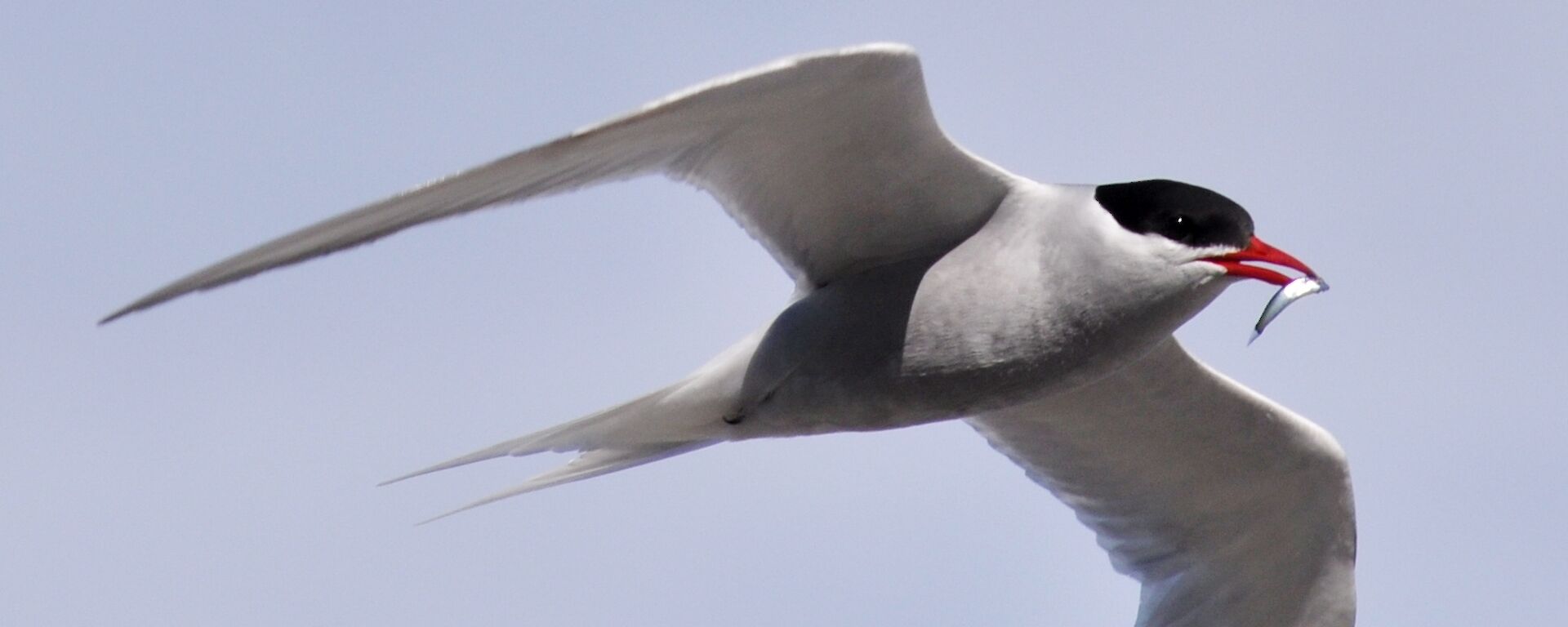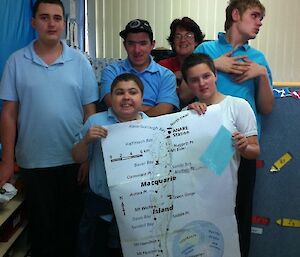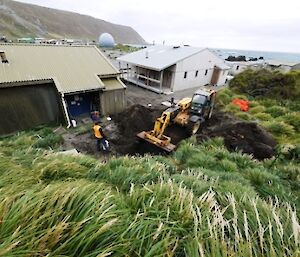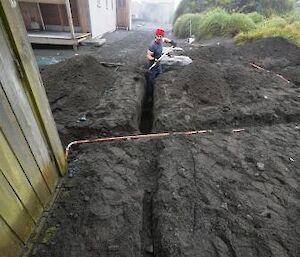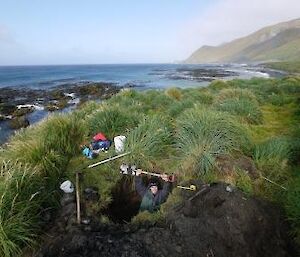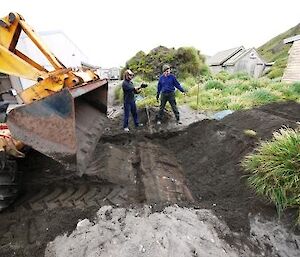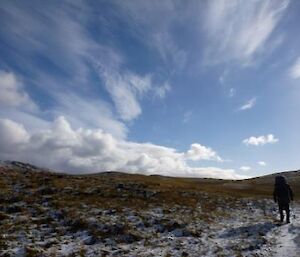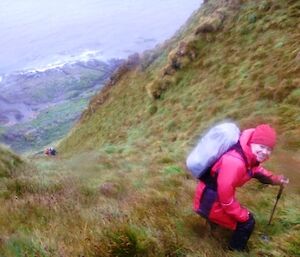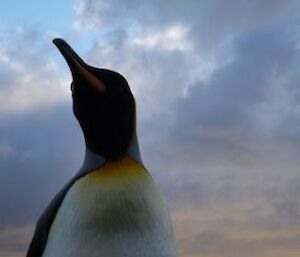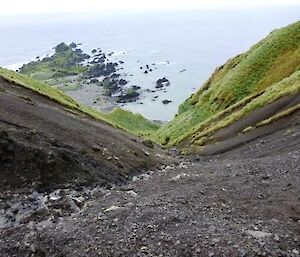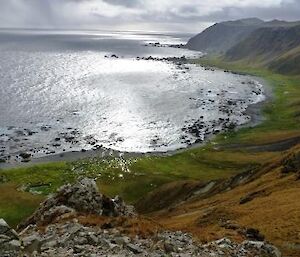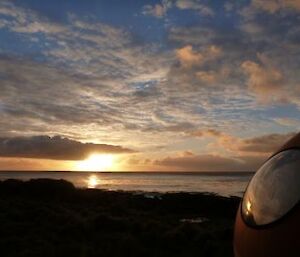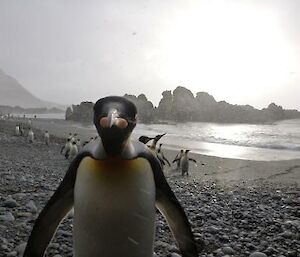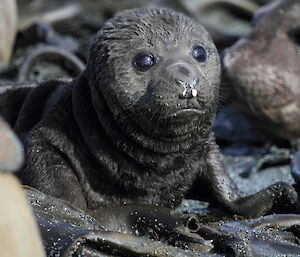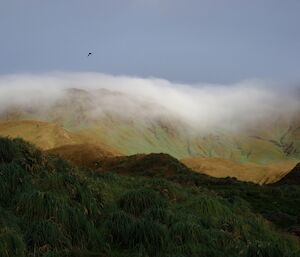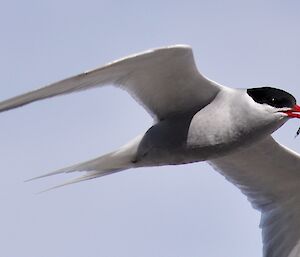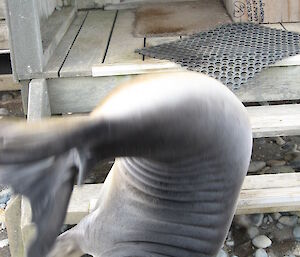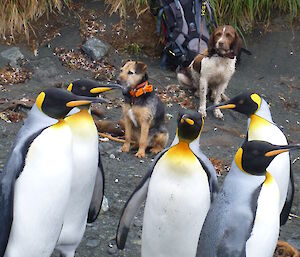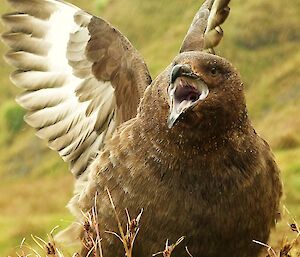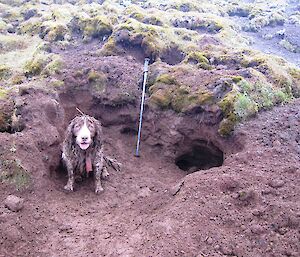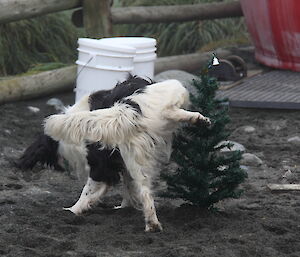At Macquarie Island there are two sites where fuel spills have occurred — at the Fuel Farm (FF) and at the Main Power House (MPH). The MPH site has ‘historic’ contamination and also a documented spill in 2002. The Australian Antarctic Division’s Contaminated Sites Group (part of the Terrestrial and Nearshore Ecosystems programme) assesses, develops and implements risk and remediation strategies for these fuel spill areas. Remediation activities have been undertaken since 2009 and are ongoing, with preliminary site-specific remediation end-points expected to be developed before the 2012–13 field season. The Australian Antarctic Division’s Contaminated Sites Group (part of the Terrestrial and Nearshore Ecosystems programme) assesses, develops and implements risk and remediation strategies for these fuel spill areas. Remediation activities have been undertaken since 2009 and are ongoing, with preliminary site-specific remediation end-points expected to be developed before the 2012-13 field season.
Microbial degradation of hydrocarbons occurs naturally. However, to enhance this process, nutrient addition and aeration of the soil is used to ‘bioremediate’ the contaminated sites.
During the 2011–12 season, four scientists have been busy sampling soil and groundwater in the contaminated areas, to determine contamination levels and assess how the remediation process is going. There has also been a great deal of work undertaken in the laboratory to process samples and determine Total Petroleum Hydrocarbon level in the soil and water samples.
Since ongoing monitoring has indicated that biodegradation is proceeding quite slowly in the MPH area, one of the large tasks this season has been the excavation of this site. This involved removal of the current underground aeration and monitoring infrastructure by hand, which included aeration spikes and tubing, conduit cables, water-sampling piezometers and oxygen sensors. The area was progressively excavated, sampled and backfilled with the contaminated soil mixed in with slow-release fertilizer, to enhance microbial activity and fuel breakdown.
While playing with contaminated soil may not be as sexy as the mega-fauna wandering around this island, cleaning it up is important for them and our own responsibilities of looking after the World Heritage status of this island.

